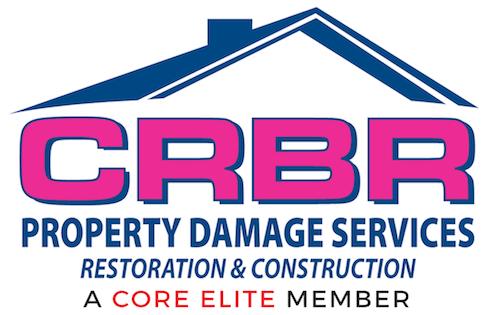The Repair Is Just the Beginning
Fixing a leak is mechanical. Restoration is structural. And if you’ve ever dealt with water damage in your home or business, you know that repairing the pipe doesn’t fix the destruction water left behind. A lot of property owners in Redding learn this the hard way. A broken water pipe repair might solve the immediate issue, but unless you treat what the water touched — and everywhere it spread — you’re left with decay, odor, and more restoration bills.
Water behaves like smoke. It travels fast, follows paths of least resistance, and settles in the most unexpected places. That’s why after any water pipe break, the focus must be on the structure, not just the source.
Hidden Moisture Is Where the Real Trouble Lives
Once water escapes into a structure, it begins to soak into porous material — wood, drywall, insulation, adhesives. A pipe leak cleanup service might be called for when you first notice the problem, but by that time, water has already traveled into areas you can’t see.
Let’s say you had a kitchen sink overflow or clogged drain overflow. You mopped up the mess, fixed the sink, and moved on. But that water went under the cabinets. Into the baseboards. Possibly under your flooring. And if there’s any wood or MDF in those spaces — it’s swelling, warping, and growing weaker by the day.
Water Under the Floor Is a Slow Disaster
What most people miss is floor water damage that happens beneath the surface. Flooring may look flat and dry, but water trapped between subfloor layers can fester for weeks. Add heat or foot traffic, and that damage accelerates. Eventually, it leads to cracked tile, lifting laminate, or sagging floorboards.
And then you’re calling in for structural restoration, which could have been avoided with a comprehensive water damage cleanup the first time.
When a Simple Leak Wrecks the HVAC
Another common consequence of neglected water is damage to mechanical systems. A leaking pipe near your AC closet or attic may look small, but moisture from that event could find its way to your unit’s drain line, resulting in an hvac discharge line repair. If not addressed, it can short-circuit the system or spread humidity throughout the home.
That same leak could also back up to bathrooms, leading to a bathroom sink overflow, a toilet overflow cleanup, or worse — water traveling into adjacent rooms and ceilings. These events never stay contained.
Appliances Don’t Just Leak — They Spread Damage
A appliance leak cleanup is one of the most misleading restoration jobs. The leak itself is rarely dramatic. A few drops. A wet corner. But over time, that water spreads under flooring, into wall cavities, and even into framing behind cabinets.
When those hidden spots remain untreated, the damage grows. Adhesives fail. Mold forms. Odors linger. And before long, what started as a cracked hose behind a washing machine has turned into a whole-house emergency water restoration call.
Storms Make Small Leaks Much Bigger
A main water line break during a storm, or pressure change from flash flooding, can create burst pipes in vulnerable areas. But if your attention stops at the pipe repair and not at the damage trail, you miss what really matters.
The water spreads fast. If your property takes on flood damage, it may involve flood damage cleanup, sewage removal & cleanup, and inspection of all systems that may have been touched. That includes walls, subfloors, insulation, and any nearby electrical outlets or appliances.
Storm and wind damage cleanup crews should always verify moisture in walls and base structures. Otherwise, the visible damage gets patched… and the hidden damage festers.
Roof Leaks Compound the Problem
If there’s one kind of leak that seems unrelated but always makes a mess worse, it’s a roof leak. Water from above settles in ceiling cavities, travels behind walls, and meets water from below or from plumbing. Together, they saturate structures, weaken framing, and introduce long-term deterioration.
We’ve seen cases where a storm damage restoration call missed a roof leak, only to have another leak happen months later — in the exact same spot. Why? Because the first team fixed the pipe, not the roof.
Fire and Water Always Go Together
You can’t talk about restoration without mentioning how fire damage restoration almost always includes water damage. After a kitchen fire, or even a small electrical blaze, fire crews soak the surrounding area. That water seeps into drywall, framing, flooring — often in areas the fire didn’t reach.
So now, you’re dealing with fire damage cleanup, smoke damage cleanup, and hidden water trapped inside wall cavities. If you don’t handle all of it, moisture leads to rot, odor, and potentially another round of restoration weeks or months later.
One Incident. Many Outcomes.
Most plumbing overflow cleanup calls start with a simple story. A kid flushed something they shouldn’t. A garbage disposal clogged. A drain backed up. But the consequences spread wide.
A backup today becomes a sewage removal & cleanup tomorrow. A mop and a towel today become warped floorboards and musty smells next month. That’s what happens when the source is fixed — but the damage isn’t restored.
Burst pipe damage cleanup, water extraction & removal, and dry-out protocols should be handled immediately, completely, and with professional tools — especially in homes where pipes run behind walls or under slab.
How to Get Restoration Right
So how do you avoid repeating the job two or three times?
Hire a water damage restoration company that does more than plug the leak. Hire the team that checks subfloors. Uses thermal imaging. Removes damaged drywall. Measures moisture inside cavities. One that tests for bacteria and confirms everything is dry — not just looks dry.
It’s not enough to fix the leak. Because the damage it left behind is still hiding.
And unless it’s found, dried, and removed — it’s not gone. It’s just waiting.
